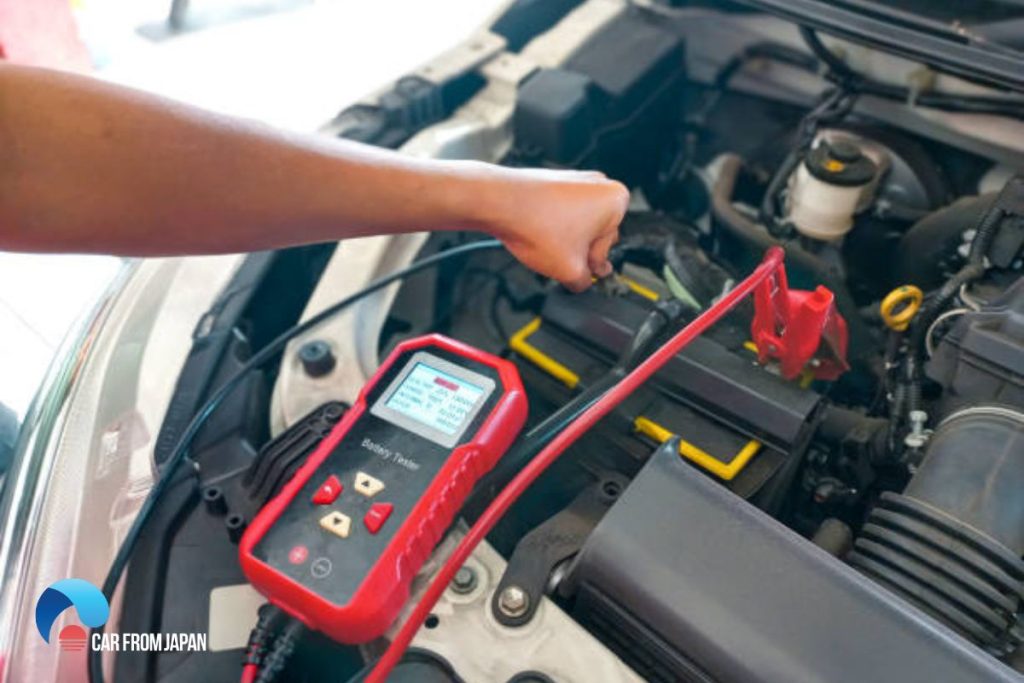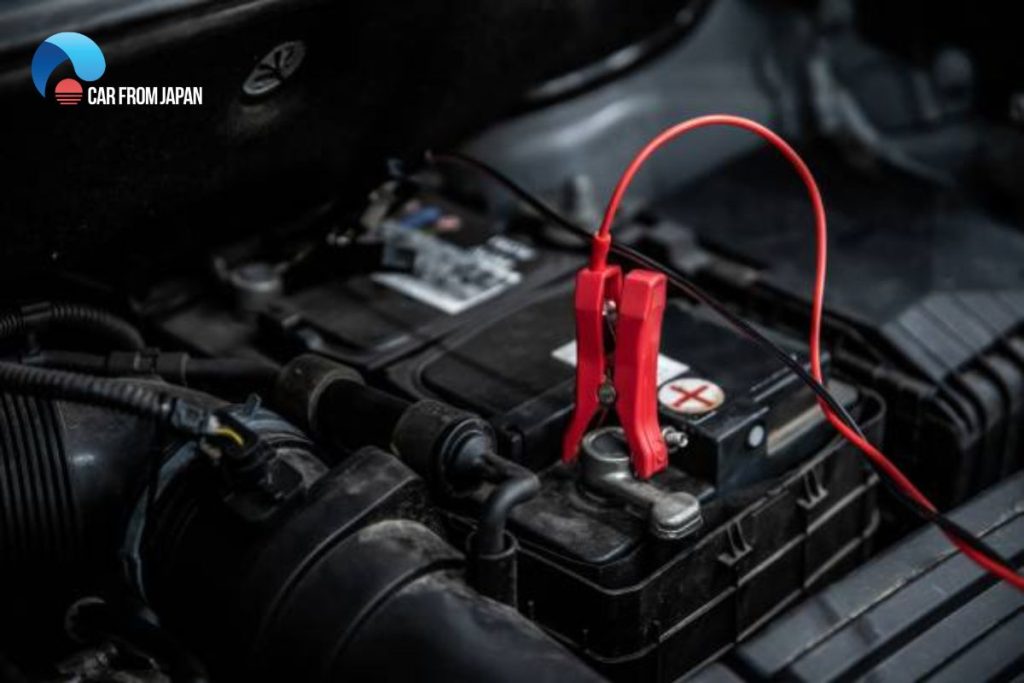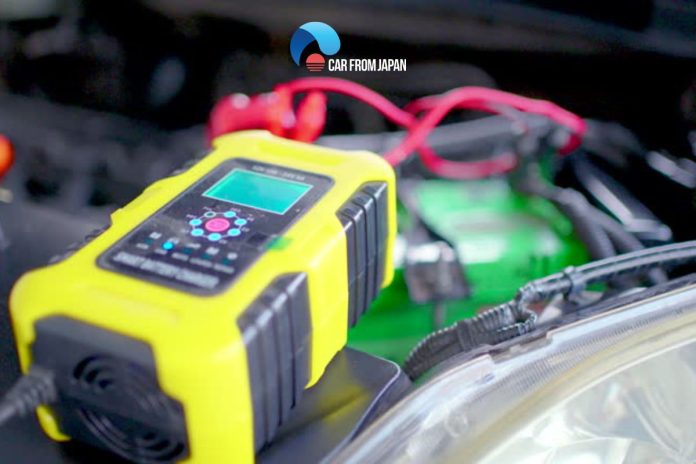Seeing “SUL” or a similar indicator on your battery charger can be confusing? What does Sul mean on a battery charger?
Sul means the formation of lead sulfate crystals on the battery plates. It blocks the flow of electricity between the plates and prevents the battery from recharging.
This article explains more details on the meaning of sulfation indicators on battery chargers, the causes of battery sulfation, and how to quickly address the problem. Understanding this often-overlooked aspect of battery maintenance can help extend the life of your batteries and avoid unexpected starting problems.
Contents
What Does Sul Mean on a Battery Charger?
The “SUL” indicator on a battery charger typically stands for “Sulfation.” It signals that the charger has detected lead sulfate crystals on the battery’s plates, a condition known as sulfation.
Sulfation occurs when a lead-acid battery is left discharged or undercharged for an extended period. Lead sulfate, a normal byproduct of the battery’s discharge cycle, normally dissolves during recharging.
However, if the battery remains discharged, the lead sulfate hardens into crystals, hindering the battery’s ability to accept a charge and reducing its overall capacity and lifespan.
Essentially, the “SUL” light is a warning sign that your battery is in a weakened state and may require special attention. Some chargers might use different abbreviations or symbols to indicate sulfation, but the underlying meaning is the same.
Check out the following battery charger SUL codes and their meaning:

| Sul Code on Battery Charger | Meaning |
| F01 | Battery voltage <10 |
| F02 | The charger is unable desulfate |
| F03 | The battery is unable to be fully charged |
| F04 | Reversed connection |
| F05 | Unable to maintain charge/decrease efficacy |
However, it’s normal for small lead sulfate crystals to form on a battery’s plates during regular use.
Causes of a Sulfated Battery
Battery sulfation, the formation of lead sulfate crystals on a battery’s plates, primarily occurs due to chronic undercharging or prolonged periods in a discharged state. Here’s a more detailed breakdown of the common causes:
Leaving a battery discharged
The most common cause is simply neglecting a discharged battery. When a lead-acid battery discharges, lead sulfate forms on the plates. This is a normal part of the chemical process.
However, if the battery isn’t recharged promptly, the lead sulfate crystals harden and become more difficult to dissolve during subsequent charging.
Chronic undercharging
Consistently failing to fully charge a battery can also lead to sulfation. If a battery never reaches a full state of charge, the lead sulfate crystals that form during discharge don’t fully dissolve. Over time, these crystals accumulate and harden.
Parasitic drains
Even when your car is off, certain electrical components can draw small amounts of power, slowly draining the battery. This is known as a parasitic drain. Over time, these drains can discharge the battery sufficiently to cause sulfation.
Extreme temperatures
Both very high and very low temperatures can accelerate the sulfation process.
Age and infrequent use
Older batteries and batteries that are rarely used are more susceptible to sulfation.
Faulty charging system
A problem with your car’s charging system, such as a faulty alternator, can prevent the battery from receiving a full charge, contributing to sulfation.
How to Diagnose a Sulfated Battery?
What does sul mean on a battery charger? The diagnosis gives you a clear view of the process.
Here are the steps to diagnose a sulfated cell by digital voltmeter:
- Recharge the battery to its full charge.
- Rest the battery overnight before checking the circuit voltage to prevent misreading.
- Measure the battery’s voltage. If you find the voltage <12.4 V, it’s an indication that the battery is sulfated. A reading higher than 12.4 V means you can still recover the battery.
- Charge the battery again and rest it for 72 hours.
- Repeat until the battery voltage reaches maximum capacity, or no improvement is evident.

How Do You Fix a Sulfated Battery?
Sulfation is a common issue for lead acid batteries. There are two types of sulfation in battery chargers: reversible and irreversible or permanent.
Here is how to fix a sulfated battery:
Reversible
To fix this problem, you must overcharge a fully-charged battery with a 200mA. Raise the terminal voltage to 2.50 – 2.66 V for 24 hours. It will increase the battery temp to 122–140°F (50–60°C) and dissolve the sulfate crystal.
You can also use an anti-sulfation system for the battery terminals that prevent reverse sulfation.
Irreversible or permanent
When the battery remains uncharged for a prolonged time (weeks to months), the battery plates may become covered with lead sulfate crystals. In that case, you cannot restore the unit.
How to Prevent Battery Sulfation?
The easiest way to prevent sulfation is to charge your battery correctly using the right deep cycle battery chargers. Do it by using a compatible charger and keeping your battery charged. Below are a few quick tips that may help you avoid sulfation:
- Charge batteries after each full discharge and before long periods of non-use.
- Avoid overcharging or over-discharging your batteries.
- Use the battery regularly.
- Clean the battery terminals periodically.
- Be sure to store your batteries in a cool, dry place.
FAQs about Battery Sulfation
Can you still charge a sulfated battery?
Yes, you can still charge a sulfated battery, but it’ll take longer, and the battery will likely hold a reduced charge. You might need a special desulfating charger and more charging time to break down the hardened lead sulfate crystals. If the sulfation is severe, it’s best to consult a professional to avoid damaging the battery further. In many cases, severe sulfation means the battery is nearing the end of its life and replacement is the most practical option.
What is the fastest way to desulfate a battery?
The fastest way to desulfate a car battery is using a dedicated battery desulfator. These devices use pulse technology, sending short bursts of high-frequency voltage to break down the lead sulfate crystals more effectively than regular chargers. However, desulfators are a specialized tool and might not be suitable for all battery types, so it’s important to check compatibility before use. Even with a desulfator, severely sulfated batteries might not fully recover.
How long does it take to desulfate a battery?
Desulfating a car battery typically takes between one and two days, but it can take longer depending on how sulfated the battery is and its size. Heavily sulfated batteries might require several days or even longer to desulfate effectively. Most experts recommend allowing at least a full 24 hours for the desulfation process, even for moderately sulfated batteries.
Conclusion
Understanding what SUL means – a sulfated battery – empowers you to take control of your car’s electrical health.
Remember, a sulfated battery often exhibits symptoms like slow engine cranking, dim headlights, and difficulty holding a charge. If you encounter these issues, coupled with the SUL indicator, it’s time to take steps to revive your battery.



